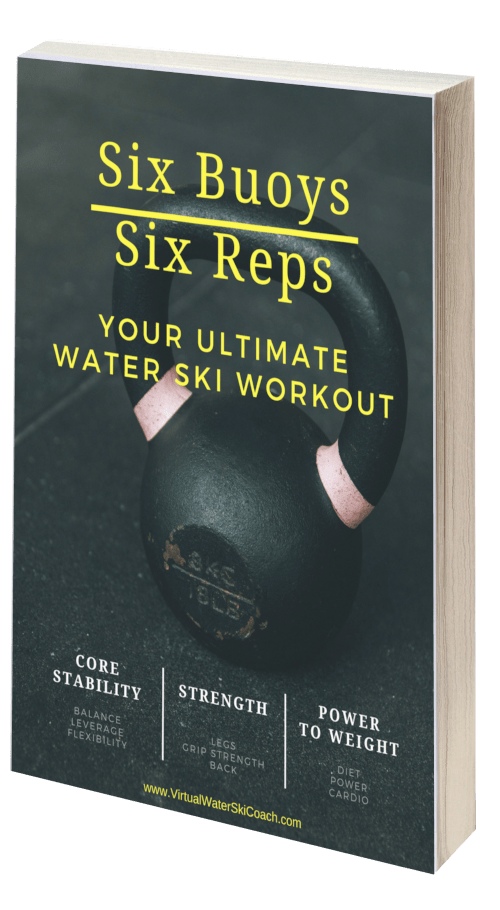
There’s a common scenario that plays out for many learner skiers, regardless of whether you’re learning to get up on double skis, a single ski, a wake board or something else.
See if this sounds familiar to you.
The scenario
You’re struggling to get set in the water in the correct position, one hand holding the handle while the other hand paddles through the water like an oar, in an effort to keep everything together and lined up between you and the boat.
For a brief moment everything finally aligns, so you get both hands on the handle and yell Go!
But in that next instant, while the driver puts the boat into forward gear ready to take off, everything falls apart. You had everything perfect just a split-second earlier, but now you’re somehow sideways in the water with your skis pointing everywhere, totally out of sorts.
In this moment you’re desperately wondering whether you should risk taking a hand off the handle again to paddle yourself back into position. But the boat’s about to take off! So there isn’t time for that. But if you leave both hands on the handle there’s no way you’ll be able to regain control in time.
This all happens in a second, and of course the very next thing that happens while you’re in this mess, is the boat takes off!
Game over.
The problem
So what’s going on here?
You could frame this as being a problem with water turbulence while the engine is at idle speed and the boat is in gear. It would seem to follow that the solution should be to spend as little time as possible in that state.
But I submit that it’s actually the timing that’s the real problem here, not the turbulence itself. And therefore the solution is not to spend less time at idle speed, but more time.
I recommend practising this arrangement with your boat driver while you’re getting the hang of your deep water start: rather than have the boat take off immediately after your ‘go’, instead try idling (in gear) through the water for an extended period of time.
The solution
It probably sounds counter-intuitive (and I do realise that a lot of my skiing advice is in that counter-intuitive category), but idling through the water does a few good things for you.
Firstly it gets you accustomed to the random buffeting of water turbulence as you move slowly through the water in the cannonball position. In particular, it gets you familiar with the idea that if some turbulence bumps you off balance to your left (for example), you don’t necessarily need to try to counter that immediately. Because the next push from turbulence is most likely going to push you back to the right again.
Since you’re anchored to the boat via the handle, the push-and-pull of the water is ultimately self-correcting. If you simply hold on through it all, while staying loose and relaxed, with a little bit of give and take, you can stay in the cannonball position basically forever – and with surprisingly little effort.
The second big advantage to this technique, is that it allows the driver or observer (assuming they have sufficient skill and experience) to choose the perfect moment to take off. They can decide the moment for you, based on what they’re seeing.
Once the driver/observer has become familiar with this technique they will be able to constantly watch your position in the water as you move slowly forwards, and select the perfect moment to take off. By using this technique they will also have many of those moments to choose from! Win/win.
So for example if you’ve said ‘go!’ and then immediately fallen sideways, the driver can simply wait for a moment until some further random turbulence pushes you back into the correct position again, before putting the hammer down.
For you the skier, once you’ve practiced this technique you’ll be quite comfortable and confident managing the low-speed turbulence. You’ll have no trouble patiently waiting until you’ve regained the perfect position for taking off.
This exercise can be performed either as an occasional training drill, or as your default technique for taking off from a deep water start. Either way you won’t need to perform this technique for too long, because you’ll soon be totally comfortable in that initial slow phase, and easily able to remain in the cannonball position.
Before you know it, you’ll be nailing all of your deep water starts!
Please let me and the rest of the tribe know how you go, using the comment box below.
Your virtual water ski coach,
Todd
PS – Image background courtesy of the free royalty-free photos at http://www.TonyKlarich.com.
PPS – Before you go, why not:
